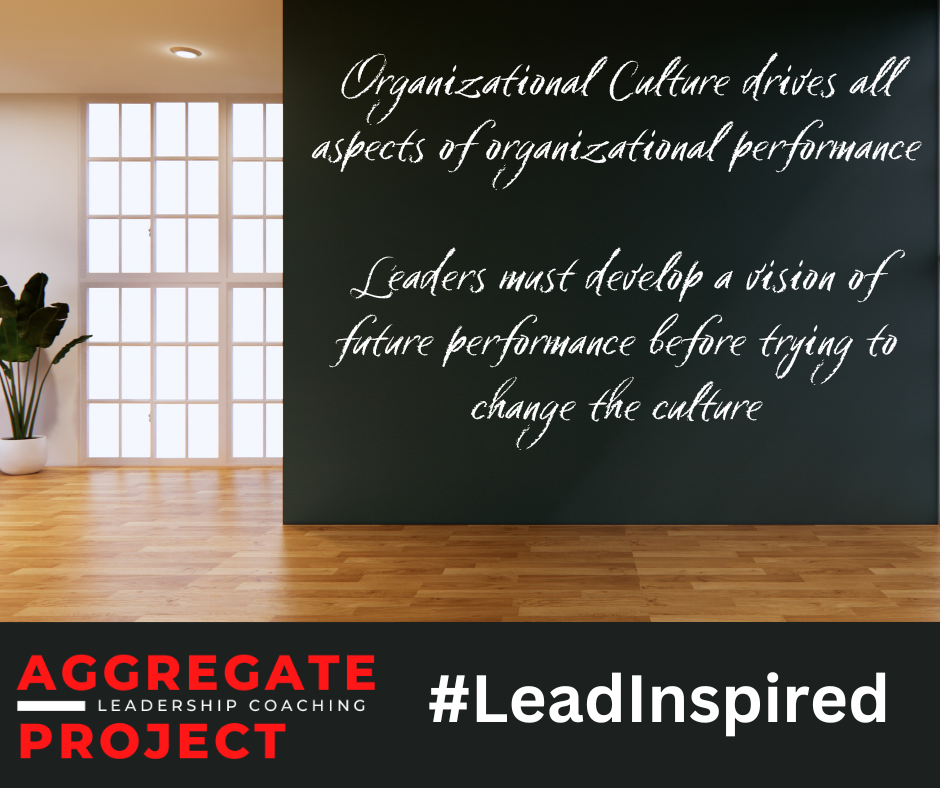Organizational culture has been a source of constant conversation for the past two decades. Managers and supervisors speak about corporate culture and what being a part of their team is like. Senior leaders spend countless hours shaping and building their organization’s culture into their ideal vision. But what is organizational culture? Before we can start to affect change in our organization’s culture, we must understand what it is.
Vasundhara Sawhney (Senior Editor, Harvard Business Review) says, “Culture is an organization’s DNA. It is the shared values, goals, attitudes, and practices that characterize a workplace. It is reflected in how people behave, interact with each other, make decisions, and do their work (hbr.org).”
With this in mind, an organization’s culture is the tangible and intangible factors that drive a team to be successful. In the case of positive cultures, these factors shape how team members and departments work together to achieve common goals. In contrast, success in toxic cultures often leaves team members feeling incomplete, disenchanted, and frustrated.
No One-Size-Fits All
A company’s culture influences all aspects of the company. Culture shapes how managers and supervisors interact with their teams. It manifests in how employees interact with clients and external agencies. It shows up in engagements between team members and departments. And it appears in how companies compete and measure performance in the larger market.
When attempting to create or adjust an organization’s culture, leaders must understand how they want their company to act. Innovative, cutting-edge companies will need a vastly different culture from highly aggressive profit-focused companies. Small startup organizations and large multi-tiered firms will significantly differ in their cultures. And traditional brick-and-mortar companies will need to employ different organizational culture models than those with extensive work-from-home opportunities.
To successfully cultivate and preserve the envisioned culture, leaders must know where they want to take the organization and have a rough idea of how they want to get there. They must understand how they want employees to act, think, and feel before they can be successful in crafting their organizational culture. Building culture takes time and effort. Without a desired outcome, leaders will waste time chasing the next shiny “Culture” breakthrough.

Observing Culture
As mentioned above, organizational culture is an organization’s tangible and intangible drivers. Measuring factors such as values, goals, and attitudes is extremely difficult. Many employees would need help to accurately describe these within the organization. So how can leaders assess their current culture and determine if it is the right fit for their organization? By observing the relationships and practices of the people in the organization.
I look at five areas that I believe to be critical manifestations of culture when I am observing an organization’s culture:
Conflict Management: How an organization handles conflict is driven mainly by the company’s culture.
How does the organization handle differing opinions from within the organization? Are these opinions allowed to be expressed and discussed, or are they immediately squashed? Does the organization value the input of everyone on the team or only a select few? How does the organization react when conflict arises from outside the organization – vendors, clients, partners, etc.? Do they seek to learn and overcome these conflicts, point blame, or end the relationship?
Internal Relationships: Employees’ relationships with their team members, members of other teams/departments, and management sheds light on organizational culture. These relationships demonstrate attitudes of competition, collaboration, inclusiveness, hostility, and a host of others that directly manifest the organization’s culture.
Leadership Involvement: The level of involvement in day-to-day activities, projects, and all other aspects of the organization’s operations reinforces the organization’s culture. Similarly, rewards systems and incentive programs led by the organization’s leadership shape the culture. Different cultural models require different levels of involvement. The organization’s leadership team must be intentional in how involved they are in every aspect of operations.
Feedback Systems: How performance is measured is a by-product of organizational culture. The aspects of performance that management sees as essential are directly tied to the culture they cultivate within the organization. Additionally, how feedback is provided ties into relationships and leadership involvement, which, as already mentioned, are key indicators of an organization’s culture.
Communication Networks and Structure: In their book Tribal Leadership Dave Logan, John King, and Halee Fischer-Wright identify two types of relationships or “Tribes.” The first is dyadic – two people in a one-on-one relationship. The other is triadic – three or more people in a group relationship. This directly relates to communication networks and structure. Companies can communicate in two ways; one-to-one or in groups. The chosen communication style and methods reflect an organization’s level of openness. This openness, or lack thereof, is another critical indicator of the type of culture within an organization.

Join us throughout January and February as we explore various topics related to cultivating positive culture within your organization.
We hope you will join us on this journey as dive into:
- Defining Organizational Culture
- Signs of Poor Conflict Management Within Organizations
- Fostering Professional Relationships
- Overcoming Toxic “No” Culture
- Overcoming Toxic Leadership
- Designing Effective Communication Networks
- Building Winning Teams
Click here to get a free copy of our Building Organizational Culture Cheat Sheet.
Join us on Facebook and LinkedIn to continue the conversation.
Leave a comment